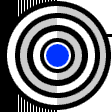|
April 4, 2003
|
||
|
 |
 |
| Mice offer lessons on aging | ||
| Contact: Dan Krotz, dakrotz@lbl.gov | ||
|
|
There's a lot to learn from a mouse. Live simply, avoid trouble, and if you want to reach old age, maintain your genome. The last lesson comes by way of an international team of researchers who use mice to explore how and why people age.
The team, which includes Berkeley Lab cell biologist Judy Campisi, alters mice to carry rare disease-causing genes that accelerate aging. They're learning how these genes disrupt genome maintenance -- the ability to repair damaged DNA -- and how this disruption leads to cataracts, hearing loss, and other trappings of old age that, in severe cases, affect even children. Their inquiry not only sheds light on syndromes with names like Cockayne and trichothiodystrophy, but the genetic roots of aging in everyone. Ultimately, they hope to parlay their research into pharmaceutical therapies for both rare diseases and the everyday aches and pains of growing old. "We're not talking about a fountain of youth, but adding a few years of healthy life," says Campisi, a senior staff scientist in the Lab's Life Sciences division. Campisi is among a vanguard of researchers worldwide who employ the latest scientific tools to investigate the oldest of mysteries. Some are learning how caloric intake influences life span, some are discovering how hormones affect longevity, and some, like Campisi's team, search for clues in life's blueprint. It's a likely suspect. The human genome has approximately 50,000 genes and countless DNA sequences that regulate their expression, each of which is continuously bombarded by molecules that inflict oxidative damage. Although the body works hard to quickly repair this damage, the constant struggle is far from perfect, especially as people age. Blame it on a Darwinian tradeoff: genome maintenance requires enormous energy, so evolution only ensures our genes are properly repaired through our reproductive years. After that, evolutionary pressures slacken and genome maintenance slows. This means that as people age, the barrage of genetic damage outpaces the body's ability to correctly repair it. This leads to mutations, which explains why cancer rates increase with age. It may also explain aging itself -- which is where mice come in. "If genome repair is important for aging, then we should be able to deliberately disrupt a genome maintenance system and see accelerated aging," Campisi says. To make this connection, Campisi's collaborators genetically modified mice to carry Cockayne syndrome. The disease is caused by a mutation in two genes responsible for repairing oxidative lesions that sometimes appear when a gene is converted into a protein. In healthy people, these genes recruit repair complexes that quickly patch the lesion before it's passed along. Unfortunately, this critical step is hobbled in people who carry the mutation, and something strange happens. Early in life, patients develop characteristics normally seen in old people, such as neural decline and retinal degeneration. Remarkably, the same mutation also speeds the aging process in mice, which suffer from tremors as well as premature ear and eye defects. These ailments reinforce earlier research in which tissue samples exhibited mutation-related degeneration. They also push the science of aging a critical step forward by portraying how compromised genome repair affects an entire organism. "The mouse models are very consistent with what we find at the cellular level," says Campisi. "And they're strong circumstantial evidence that a genome maintenance problem can cause premature aging." The team also successfully introduced trichothiodystrophy into mice. The disease is caused by a mutation that cripples the XPD gene's ability to repair DNA lesions. It causes premature tissue degeneration in people, and similar breakdowns in mice. For example, the liver of an eight-month-old mouse with the mutation appears almost three years old -- yet another way defective genome maintenance reveals itself. The next step is to link these outward signs of aging with impaired genome repair. In other words, how does uncorrected DNA damage lead to an aged liver, or to hearing loss? Are hormone imbalances to blame, or does the problem lie with poorly functioning cells? Fortunately, the needle-in-haystack search for these middle steps is made simpler by the mouse. As Campisi explains, biologists can induce organ degeneration in mice and hunt tissue-by-tissue, cell-by-cell, even gene-by-gene for the culprit. And once the complete storyline of aging is revealed, say from blunted genome repair to DNA damage to cellular degeneration to wrinkled skin, scientists can develop pharmaceutical remedies. In the case of Cockayne syndrome, this could mean breeding mice that possess the mutation with mice that possess high levels of enzymes that curb oxidative damage. If this combination dampens the disease's symptoms, then antioxidants probably shield the genome from damage and should be pursued as a therapy.
Or, even further in the future, antioxidants may lengthen everyone's life. People could take a pill that tacks on a few extra years of robust genome maintenance, and a few extra years of healthy life. The goal isn't to perfect genome repair, which is impossible, but to nudge it along and narrow the ever-widening gap between oxidative damage and maintenance. "That's still science fiction, but it's not out of the question," Campisi says. "With a mouse model, we can see correlations between how mice and people age and, more importantly, use these correlations to develop interventions." The team's work is discussed in the paper "Aging and genome maintenance: lessons from the mouse?" which appears in the February 28, 2003 issue of Science. Jan Vijg and Paul Hasty of the University of Texas Health Science Center, Jan Hoeijmakers of the Netherlands' Erasmus University, and Harry van Steeg of the Netherlands' National Institute of Public Health and Environment contributed to the research. Additional information
|
||||||||||||||||||||||||